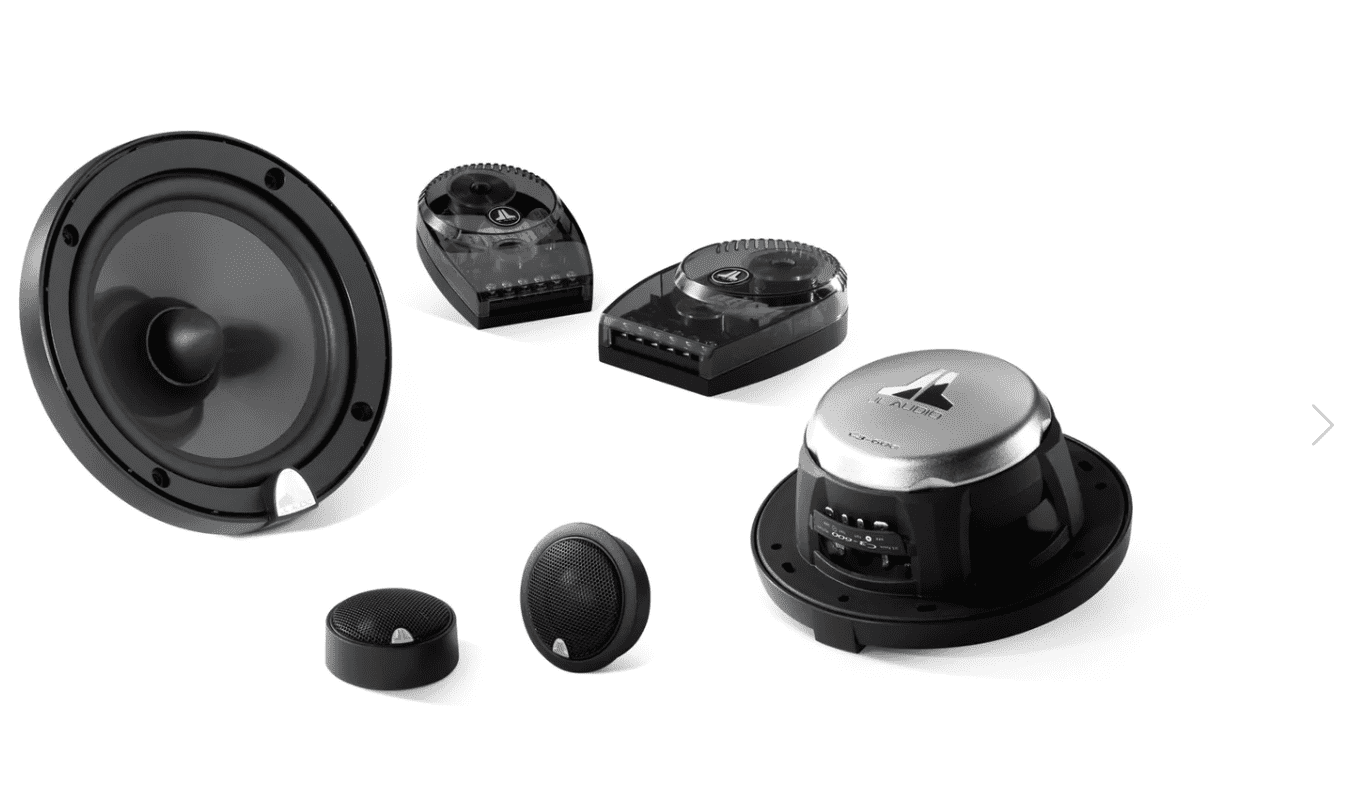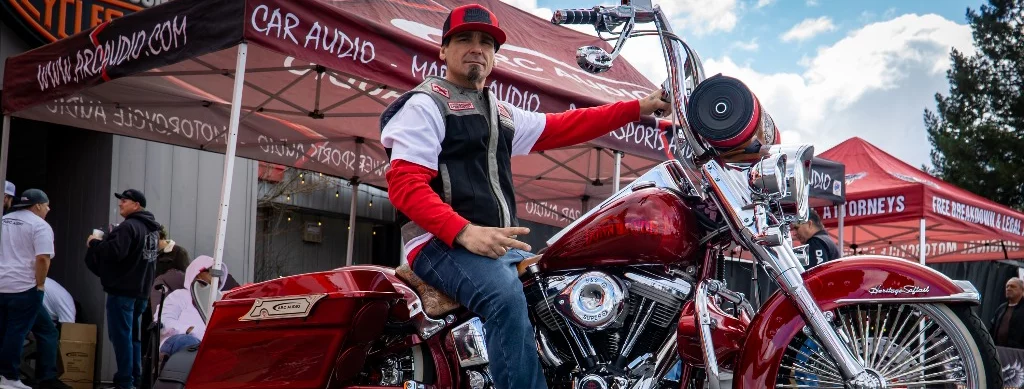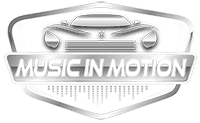
If you’re a big fan of motorcycle audio, you’ve probably seen or heard systems that use high-efficiency pro-audio-style speakers. These drivers were created for concert PA systems and can deliver amazing output levels with only minimal amp power.
In this post, we’ll look at the advantages and disadvantages of employing pro-sound speakers in motorcycle applications. Special considerations are made when paring the SP2000 with a motorcycles audio system
Before we go into the distinctions between traditional car audio speakers and high-efficiency speakers, let’s look at what speaker efficiency is and how different design characteristics affect it.
The quantity of acoustic output a speaker produces for a given amount of input signal is described by speaker efficiency requirements. The correct rating would be 88 dB (2.83 V/1M). When powered with 2.83 volts of signal from an amplifier and measured with a microphone set 1 meter away from the face of the speaker cone, this specification means the speaker will produce a sound pressure level of 88 dB.
Changing the provided power will have a significant impact on the specification. Companies may, for example, utilize the 1 watt/1 meter standard. In an 8-ohm load, 2.83 volts equals 1 watt. 2.83 volts is 2 watts for a 4-ohm automobile audio speaker. You can get the 1-watt value by subtracting 3 dB from the 2-watt standard, and vice versa.
The efficiency of speakers is determined by a number of technical design elements. The weight of the cone and voice coil combination is one of the most important elements. Cone assemblies that are lightweight are easier to maneuver and often produce more output with less power. The disadvantage of this low-mass design is that the speaker’s resonance frequency will be higher, and the driver will not create nearly as much bass. This is the fundamental difference between standard automobile audio speakers and pro-sound drivers.
The extended low-frequency extension adds a lot of impact and realism to the listening experience when it comes to music reproduction. Of course, vocals and the midrange between 175 to 200 Hz are vital, but adding another octave below that is the difference between listening to music on a smartphone or a clock radio and using a true stereo system.
Let’s examine two popular 6.5-inch woofers that are both designed for automotive audio. Speaker A is a traditional vehicle audio woofer that is intended to be installed in the door of your car or truck and is designed to be used with a tweeter. Speaker B is a high-efficiency pro audio style midrange that will require a separate tweeter to play at frequencies higher than 3,000 Hz.
In an effectively infinite baffle application (a door or motorbike fairing that isn’t sealed), the projected low-frequency response of Speaker A in red and Speaker B in yellow is shown in the graph below. The power levels displayed are based on each driver receiving 1 watt of power.
Speaker A provides around 90.5 dB of output at 630 Hz, whereas Speaker B produces 93.3 dB. Speaker B only produces 81.4 decibels of output at 70 Hz, but Speaker A produces 84 decibels. Although these numbers are insignificant, the overall tonal balance of the two choices would be discernible.
Tuners commonly tune for flat midrange response from roughly 3,000 Hz down to around 100 Hz using some of the most prevalent target equalization curves. It’s not always a good idea to put a lot of emphasis on the upper midrange. If your system has a digital signal processor, your tuner can use the equalization to decrease specific frequencies, but this will not make the bass region seem louder in absolute terms.

Clients want their motorcycle audio systems to play as loudly as possible on the interstate to block out loud exhaust systems and wind noise. The excursion capability of a speaker determines how loud it can play. Because of its short, lightweight voice coil former, Speaker A is rated to have an Xmax specification (one-way excursion limit) of 4 mm, whereas Speaker B is limited to 1.2 mm.
When driven with 70 watts of power, the graph below demonstrates how low each driver can go before the cone assembly starts to leave the magnetic gap and distortion increases dramatically. You’ll need to use a high-pass filter in the system with the high-efficiency pro audio speaker to limit power below 150 Hz. You can play the driver down to 60 Hz with Speaker A before the voice coil begins to come out of the gap with the same level of power.
Excursion-limited low-frequency output restrictions on high-efficiency speakers.
The argument for employing a pro-audio type speaker without a dedicated woofer of some sort appears nonsensical based on the science underlying how speakers work. If you just have a limited quantity of power available, a high-efficiency speaker may be helpful. Even the smallest high-quality amplifiers can output at least 45 or 50 watts of power, which should be plenty to drown out road and wind noise in practically any situation.
If all that matters is how loudly the system will play, pro-style high-efficiency speakers may be a suitable alternative if you plan to add a dedicated woofer to your bike’s saddlebag or trunk and can find one that will play up to 150 or 200 Hz without major distortion.
It’s worth mentioning that ARC Audio, Rockford Fosgate, JL Audio, and Kicker all offer motorcycle and Powersports-specific upgrade packages that use a traditional speaker design with excellent bass performance.
There are several benefits to using high-efficiency speakers on your motorcycle:
Improved Sound Quality: High-efficiency speakers are designed to produce clear, crisp sound with minimal distortion, even at high volumes. This means you can enjoy your music without sacrificing quality.
Increased Power: High-efficiency speakers require less power to produce the same amount of sound as traditional speakers. This means you can achieve higher volume levels without draining your motorcycle’s battery.
Space-Saving Design: High-efficiency speakers are typically smaller than traditional speakers, making them a great choice for motorcycles where space is at a premium.
Durability: High-efficiency speakers are often built with durable materials and designed to withstand harsh outdoor environments, making them ideal for motorcycle use.

Q: Can I use high-efficiency speakers with my existing amplifier?
A: Yes, high-efficiency speakers can be used with most amplifiers. Just make sure the speakers can handle the amount of power your amplifier can provide.
Q: Are high-efficiency speakers more expensive than traditional speakers?
A: High-efficiency speakers can be more expensive than traditional speakers, but they often provide better sound quality and durability.
Q: Do I need to install a separate amplifier for high-efficiency speakers?
A: It depends on your current sound system. If your amplifier can provide enough power for the high-efficiency speakers, then you don’t need to install a separate amplifier.

High-efficiency speakers can be a great choice for motorcycles due to their improved sound quality, increased power, space-saving design, and durability. When choosing high-efficiency speakers, make sure to consider factors such as power handling, sensitivity, and size. By selecting the right speakers for your motorcycle, you can enhance your riding experience and enjoy your music with crystal-clear sound.
Upgrade your motorcycle’s sound system with high-efficiency speakers from Music In Motion. Enjoy the crystal-clear sound and improved performance on your next ride! Contact Us if you need help choosing the proper speaker for your purpose. We can advise you on the optimal solution for your vehicle and listening preferences.
